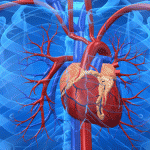
A 3D representation of the Yersinia pestis bacteria, better known as bubonic plague. Image: Shutterstock
Fleas on rats were suspected of carrying ‘Black Death’ to millions throughout Europe in the 14th Century, but the source of the actual killer has been much harder to track down.
An international team of scientists have now confirmed that the bacteria Yersinia pestis was responsible for the “˜Black Death’ that spread across Europe in the 14th Century.
Using samples from mass grave sites in France, Italy, England, Germany and the Netherlands, anthropologists at the Johannes Gutenberg University of Mainz, Germany, isolated the bacteria that caused the bubonic plague. The plague is hard to identify as a cause of death, due to its rapid fatality rate and the lack of visible evidence in the bones of the victims.
The scientists, led by Dr Barbara Bramanti, found that the DNA for the pathogens is still present in traces of bone protein or dental pulp. Ancient DNA (aDNA) samples from 76 human skeletons from the mass graves were used to confirm the presence of Y. pestis and to identify the types present.
The researchers expected to find the “˜orientalis’ or “˜medievalis’ types of Y. pestis in the samples, but have instead identified two new types. One of these is suggested to be extinct; the other is similar to types that have been isolated recently in Asia.
The sites in the Netherlands do not seem to have been infected by France or England, as a different type of the Y. pestis bacteria is present at these sites. The presence of the different types of the bacteria suggests that the epidemic spread through Europe along two different routes.
A reconstruction by Dr Bramanti and Stephanie Hänsch suggests that one type travelled from Asia to Marseille, then through France to England, while the other is believed to have entered Europe from the North via Norway. Further studies are underway to determine the exact route taken by the epidemic.






